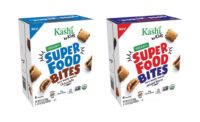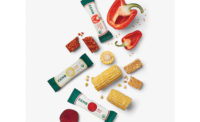Is it too late to jump on the snack- and protein-bar bandwagon? Maybe not. Though to say the snack- and energy-bar market is overwhelmingly crowded doesn’t even begin to describe the current climate of the landscape.
Our company dove into the snack- and power-bar arena a few years ago as a result of two different acquisitions. The first gave us the ability to puff and toast rice and grains. The second was an outlet for those products: a small, family-owned, cold-press bar company in Minnesota.
Although the following eating-quality attributes might seem fundamental, surprisingly, one or more is often compromised to hit a designated price point. So what can set you apart from the crowd? Let’s take a look at what could make yours the next gold standard.
Flavor: There’s nothing wrong with honey and oats, but you will be lost in a sea of “me too” bars. Innovation is key to building your own space on the shelf—but don’t sacrifice authenticity in doing so (an applied takeaway from the Research Chefs Association’s recent 2017 Annual Conference & Culinology Expo in Puerto Rico). So many bars on the shelf, so little flavor!
Texture/mouthfeel: There is no lack of texture in the snack-bar lane, but the protein bars leave much to be desired. The difficulty is producing a high-protein bar that actually comes in a manageable size. Who wants a bar the size of an iPad to achieve a 20-gram protein count? No one, of course. The use of whey is often key in producing high protein in bars, though the mouthfeel often leaves a coating in one’s mouth that is not easily forgotten—and for all the wrong reasons. Consider soy protein as a possibility, as the high protein count comes with a much more palatable texture and mouthfeel.
At the beginning of our bar trials, our R&D/culinary department recognized the need for savory flavors in the marketplace. As it turns out, we weren’t the only ones thinking that. But what we discovered was that the savory required the sweet for balance—the desired impression on the part of the customer just didn’t work without it. Fortunately, that was easy to achieve.
That needed sweetness can come from inclusions such as dried fruit or chocolate, but we discovered that binders play a key role. From honey to brown-rice syrup to agave, the possibilities are far more vast than we realized. Getting the right formula when combining binders can take time, as each comes with its own set of unique characteristics. Be sure to research each binder before diving in; it will save you many hours of R&D time on the front end.
Once you take the leap, the pressure to produce a bar that will make you a leader in the low-cost bar market will no doubt be considered. Trust me on this one: Find another angle. Someone else “kind” of captured that market early on.
Key binders:
- Honey
- Brown-rice syrup
- Agave syrup
Bar-maker advice: Play with the temperature you are heating the binders to, because a few degrees can make a big difference for your desired outcome.
Key puffed and toasted grains to consider:
- Amaranth
- Buckwheat groats
- Quinoa
- Red rice
- Sorghum
- Wild rice
Bar-maker advice: Notice brown rice missing from the puffed and toasted list? As it happens, extruded brown-rice products hold their crunch and shelf life much longer than similar products made with puffed brown rice. Rolled oats also are a great way to reduce cost and add some density to the bar when compressed, not to mention the mouthfeel and impact on the nutrition label.










